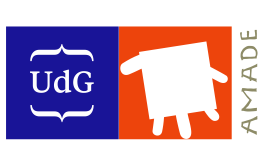phd topics with vacancies
ON THE GENERATION OF DESIGN ALLOWABLES FOR THERMOPLASTIC MATERIALS
The generation of design allowables involve costly and time consuming experimental test campaigns. In this thesis, a methodology to obtain the design allowables for different design drivers will be defined. The methodology will be based on the quantification of the uncertainty associated to the different properties and the use of advanced analytical and/or numerical models to propagate those uncertainties to obtain the design allowables.
Funding project: Collaboration with an aeronautical company
Contact person: Drs. Albert Turon, Dani Trias.
SIMULATION OF IMPACT EVENTS ON COMPOSITE MATERIALS WITH THERMOPLASTIC RESINS.
Compression after impact strength is one of the design drivers for many structural components. However, the analysis methods currently available to simulate low-velocity impact (LVI) and compression after impact (CAI) strength are not efficient. Moreover, they have not been developed for thermoplastic materials. This thesis will develop a methodology to simulate LVI and CAI on a composite layup with a thermoplastic matrix. The predictions of the simulations are going to be compared with an experimental test campaign to demonstrate the suitability of the methodology to analyse the damage tolerance of composite structures.
Funding project: Collaboration with an aeronautical company
Contact person: Dr. Emilio González.
CONSTITUTIVE MODELLING OF THERMOPLASTIC MATERIALS
The transport industry, mainly the automotive and aeronautic industry, has a lot of interest on thermoplastic composite materials. However, the analysis models available for thermoplastic composite materials are less developed than for thermoset composite materials. AMADE’s group has a large track on the constitutive modelling on composite materials. In this thesis, the models already developed for thermoset composite materials are going to be extended/reformulated for thermoplastic resins.
Funding project: Collaboration with an aeronautical company
Contact person: Dr. Pere Maimí.
DURABILITY OF BONDED JOINTS BETWEEN COMPOSITE ADHERENDS
Development of an experimental new test methodology for the analysis of the durability in bonded joints between composites subjected to a mode I peel loading. Experimental campaign to analyse the durability of different types of bonded joints for the aeronautical industry under different environmental conditions (temperature and humidity). Comparison between the results obtained with the new methodology and the existing tests. Implementation of those effects on a cohesive formulation, and performance of virtual test simulations on bonded joint specimens. The activity will be carried out within the framework of the National Research Project REDBONE and in collaboration with a research centre and a company of the aeronautical sector.
Funding project: REDBONE National Research Project
Contact person/s: Drs. Jordi Renart and Albert Turon
IMPROVING THE TRANSLAMINAR TOUGHNESS OF COMPOSITES THROUGH NOVEL HYBRIDIZATION CONCEPTS
Laminated composites have a high specific stiffness and strength but their fracture is quasi-brittle. It is this lack of ductility that prevents the optimal use of the material when the structure has geometric discontinuities (holes, notches…). The aim of this project is to explore the improvement of fracture toughness that different concepts of hybridization at different scales (ply, intra-ply or intra-tow) can bring about to structural composites. To achieve this goal the candidate must develop tools to design and test the hybrid composites.
Funding: Spanish public funded
Contact persons: Drs. Pere Maimí, Josep Costa.
DESIGN OF A CFRP GUITAR BOX
A company with 10 years experience making guitars is developing a guitar box of carbon fibre reinforced polymer. The aim is to design the internal reinforcements and mass distribution of the guitar box exploring the capabilities of the material to match the sound of wooden high quality concert guitars and overcoming the usual drawbacks of wood.
Funding project: Industrial Doctorate (Generalitat de Catalunya).
Contact person: Dani Trias
BOND AND FLEXURAL PERFORMANCE OF END-OF-LIFE COMPOSITE MATERIALS TO STRENGTHEN REINFORCED CONCRETE MEMBERS
The European Commission’s new circular economy action plan towards a sustainable growth and zero emissions greenhouse gases by 2050, has led to a higher demand on developing a circular economy framework for composite materials. One way to achieve this is to extend the life of products and give them a second life, which is eco-friendlier than manufacturing the new elements.
To achieve the objectives of the project, first a profile identification of the extracted carbon fiber reinforced polymer (CFRP) elements from End-Of-Life (EOL) aircraft will be done and later a thorough characterization will be performed to determine the mechanical properties of these EOL profiles. Different surface treatments will be considered in order to experimentally and analytically evaluate the bond performance of the EOL elements when they are being applied in strengthening the concrete members. Finally, the flexural behavior of reinforced concrete beams strengthened with these elements will be investigated.
Funding project: Spanish funded project
Contact person: Dr. Cristina Barris (link to cristina.barris@udg.edu)



